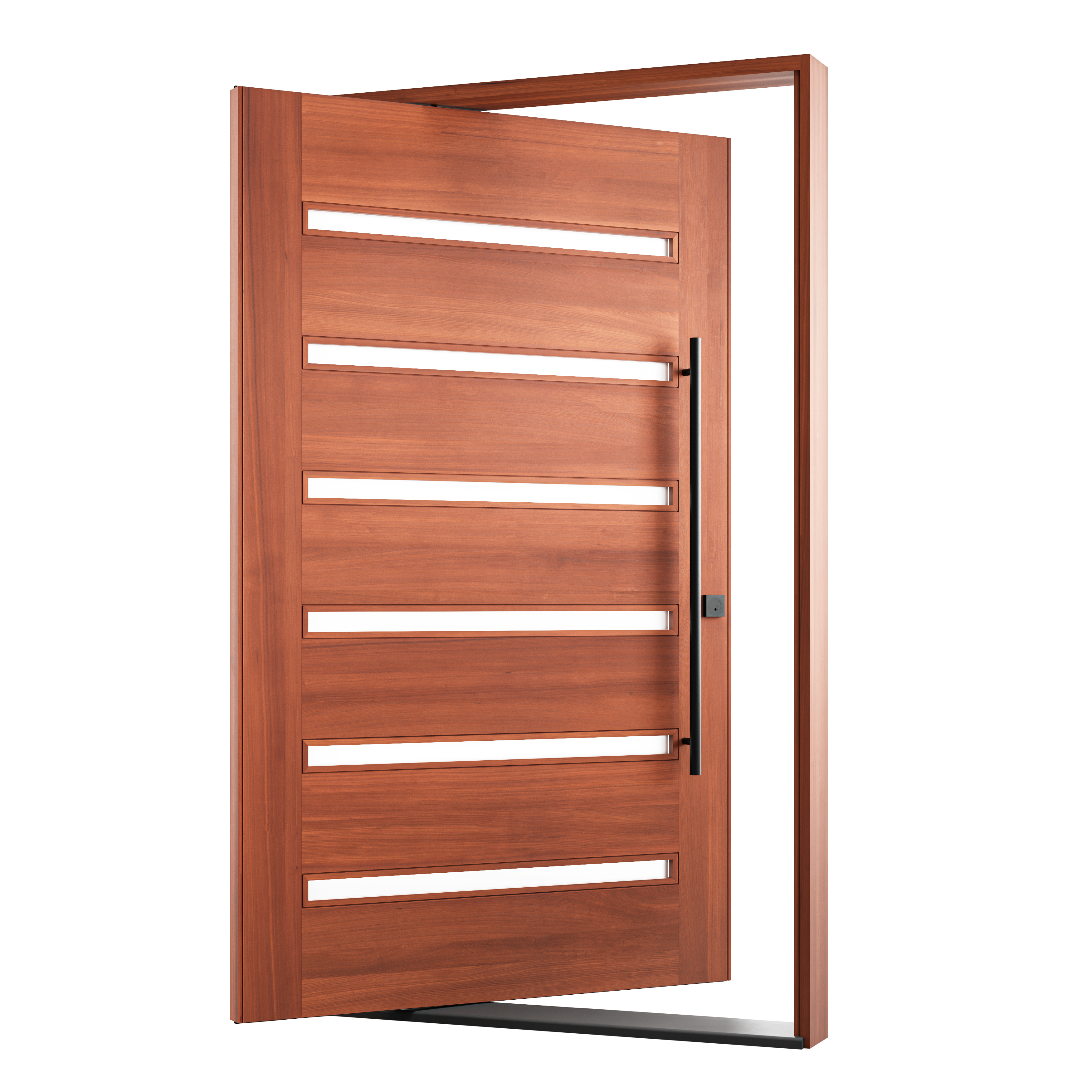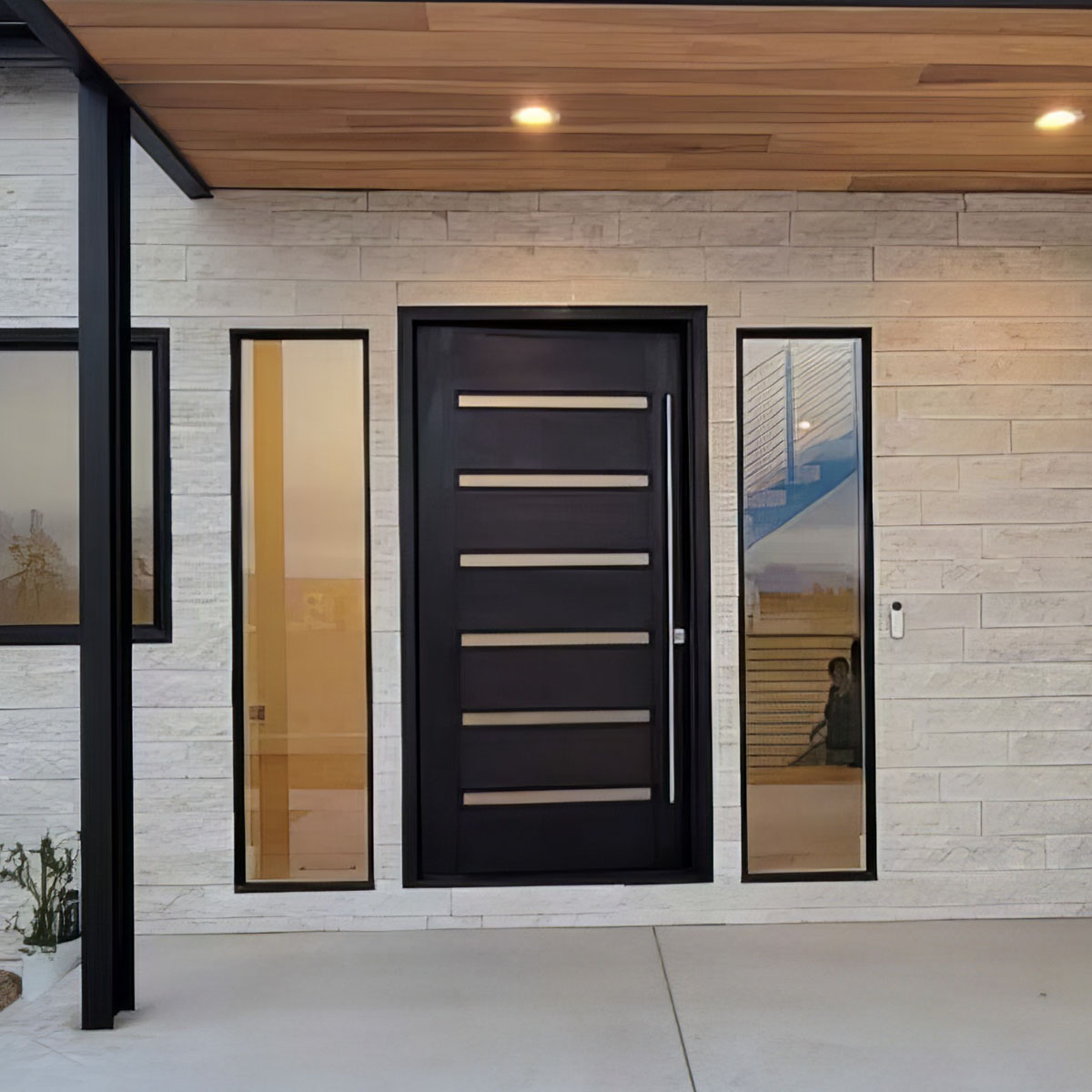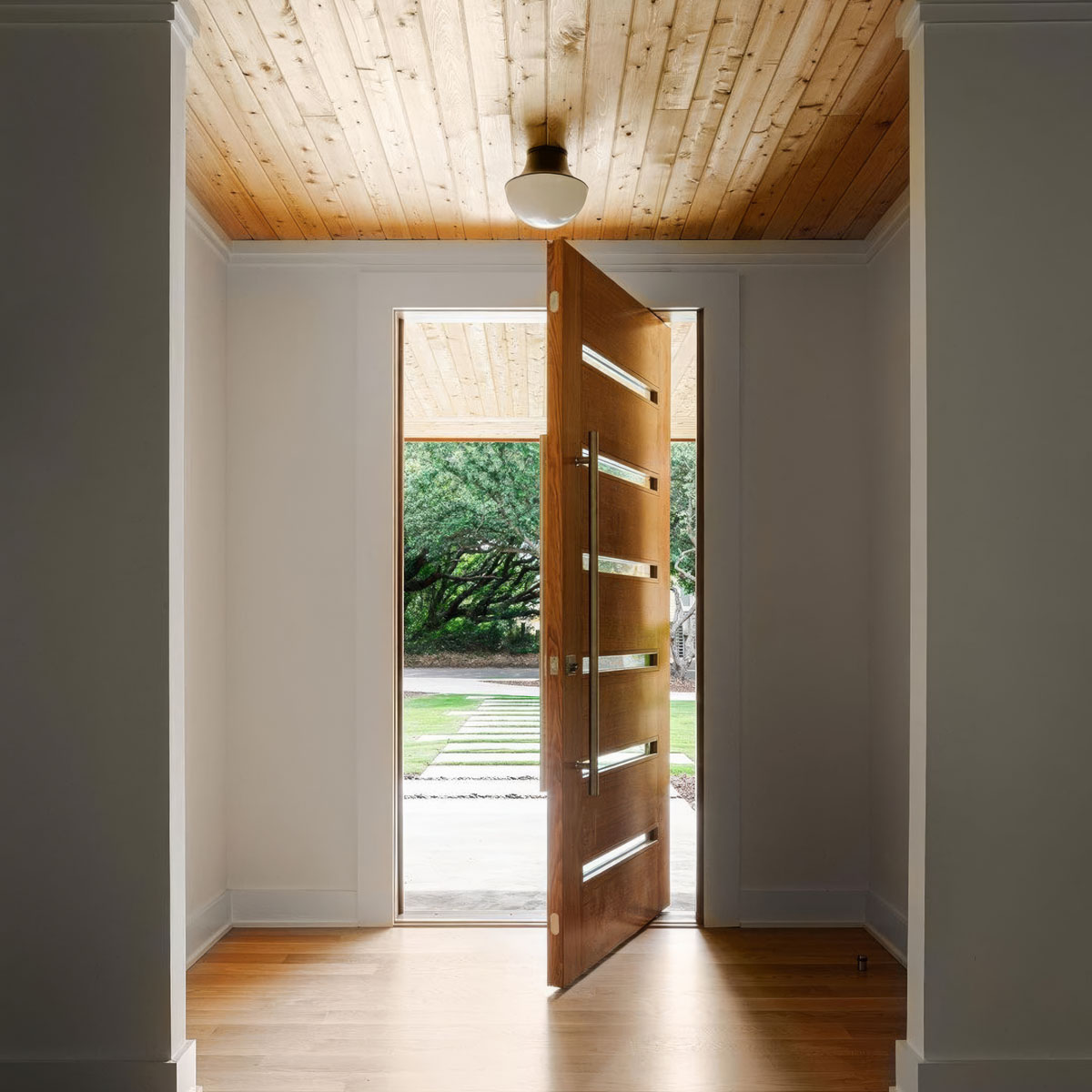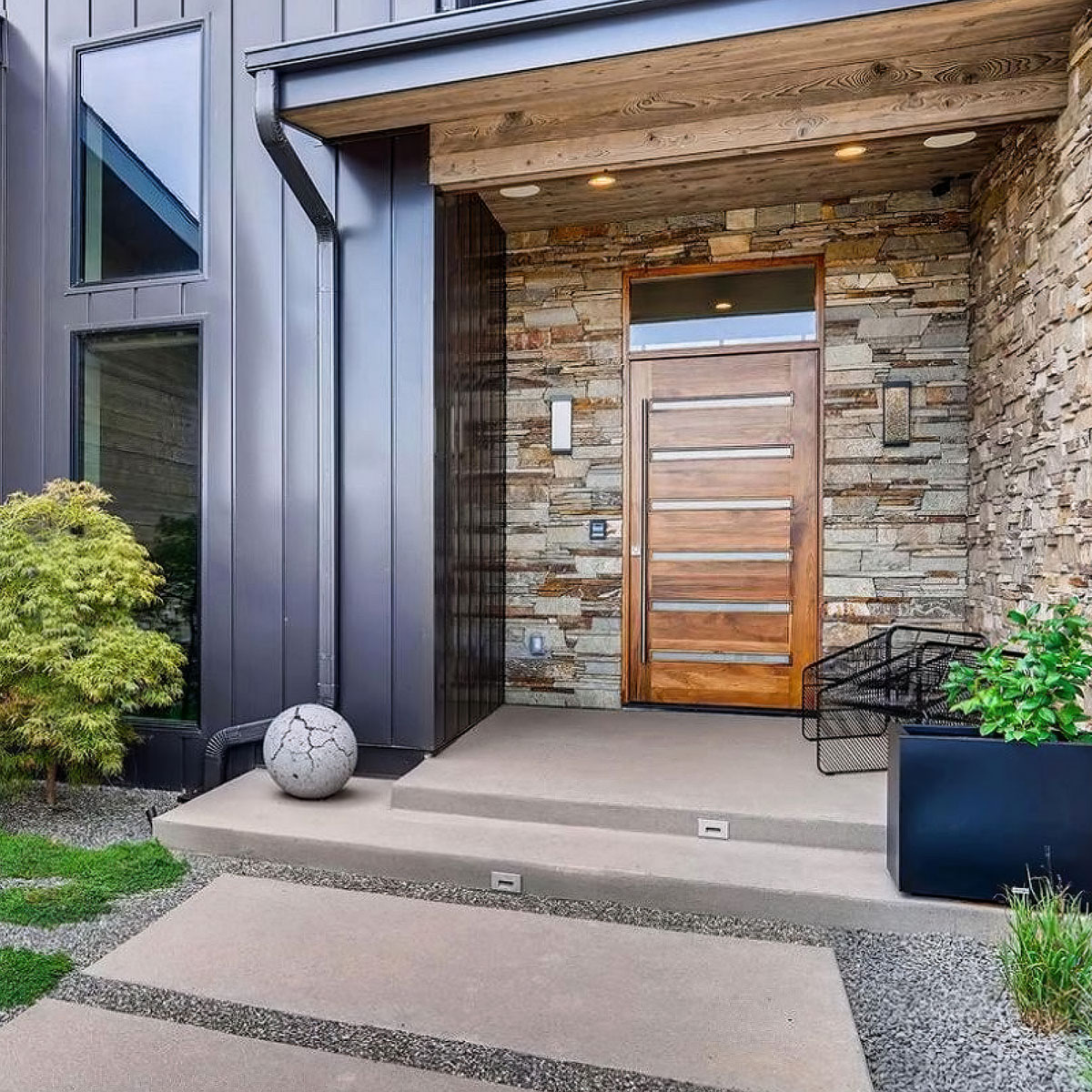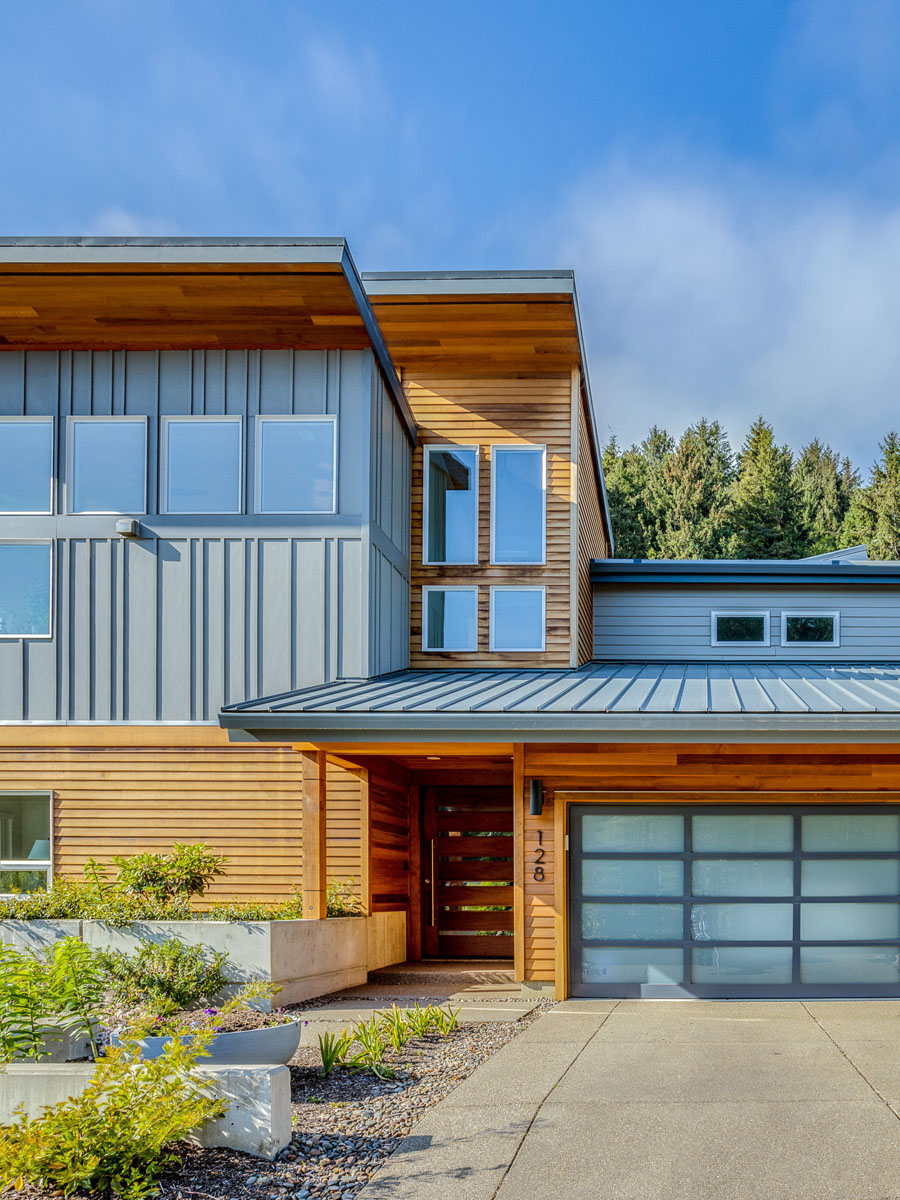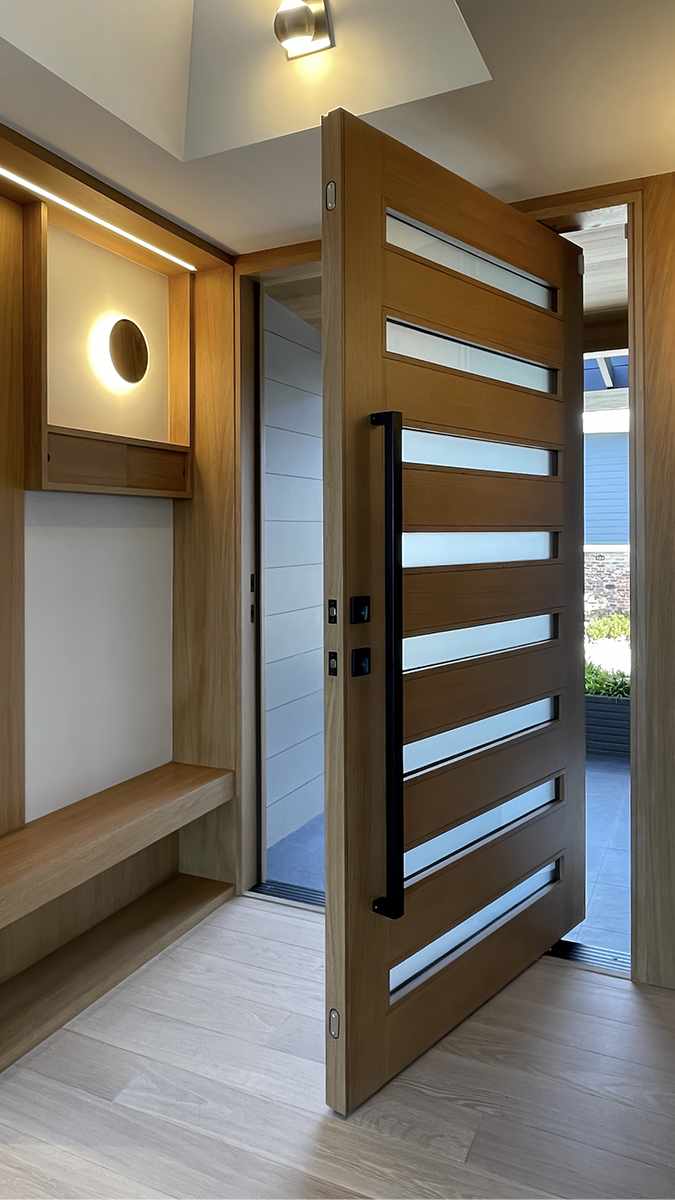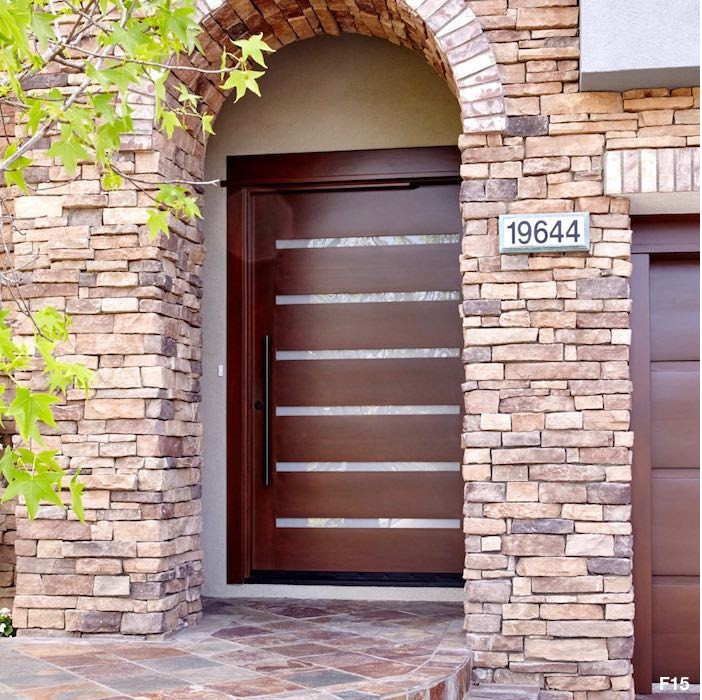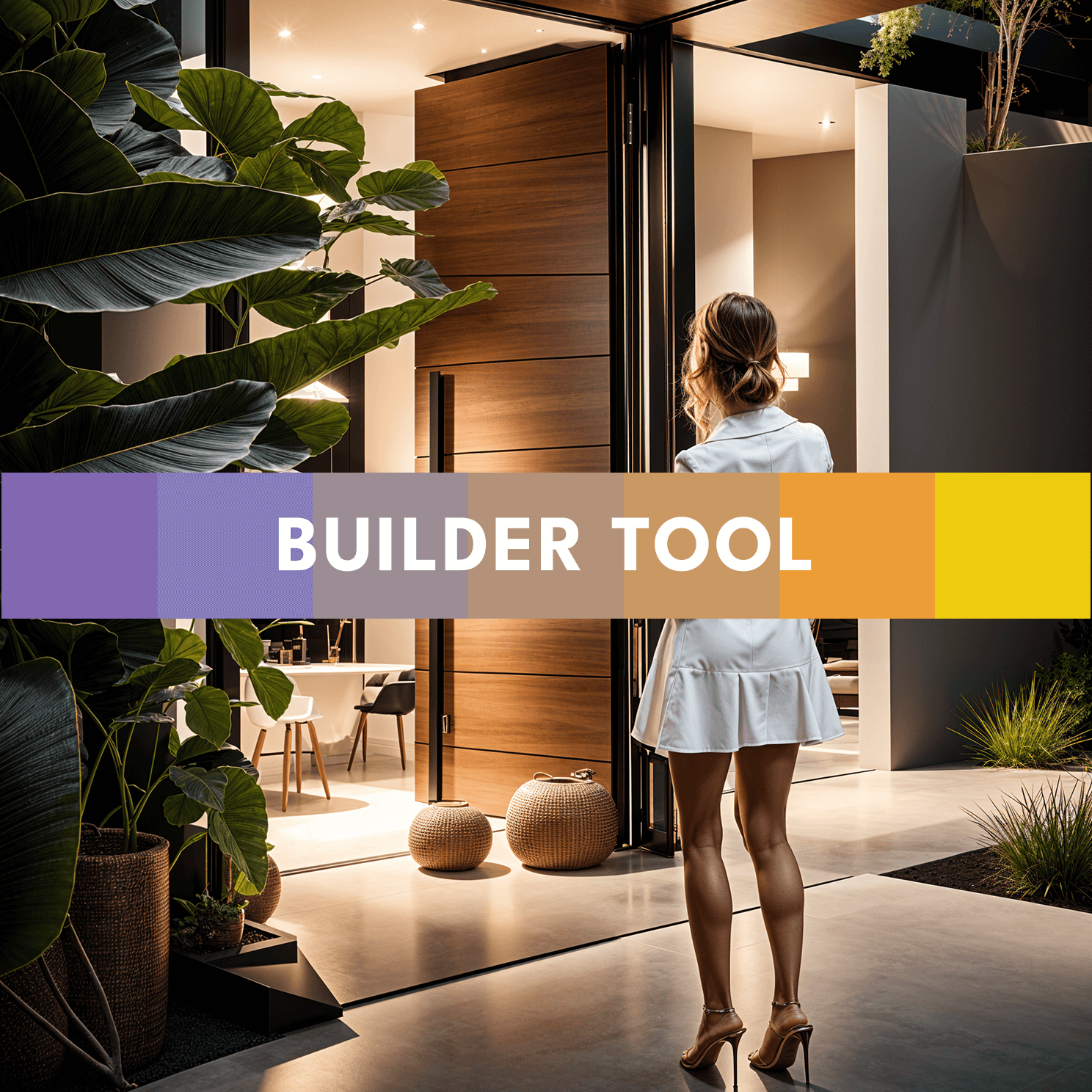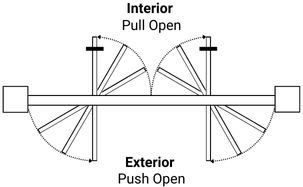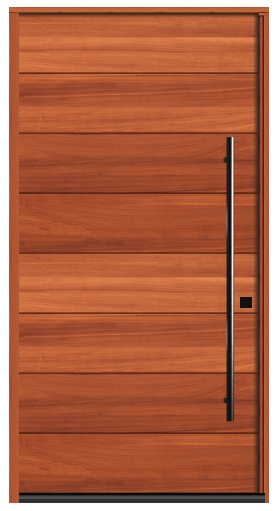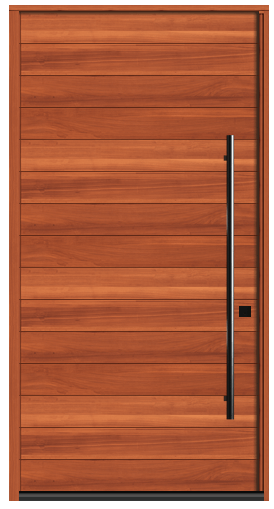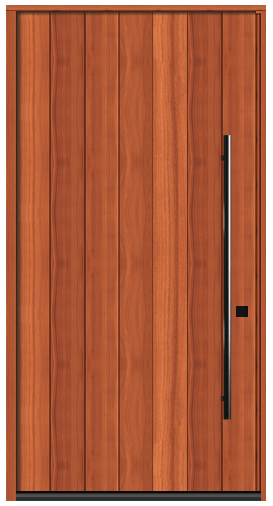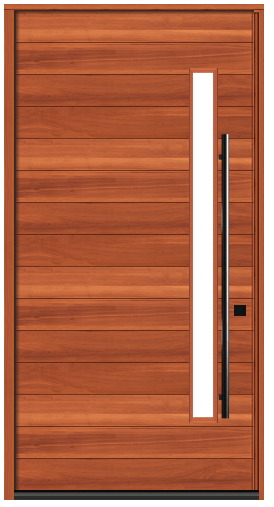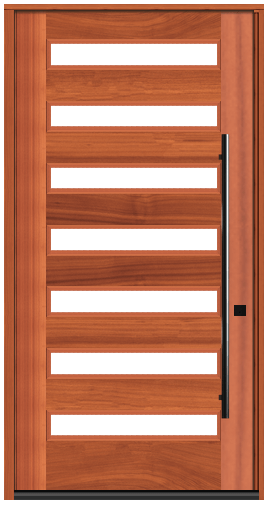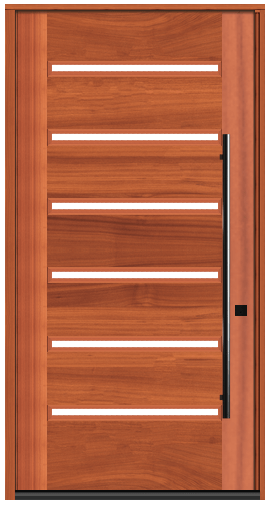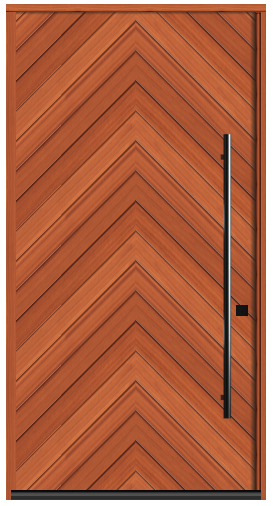More
Information

WHAT IS INCLUDED WITH YOUR ORDER
The purchase price includes a door slab, a threshold, pre-installed pivot hardware, and a jamb assembly. The jamb is assembled and prepped during manufacturing, then disassembled for shipping. The unit comes with the pivot hardware already installed in both the slab and the jamb. The door ships stain-ready. (Needs stain and clear-coat.) Handle sold separately.
LEAD TIMES AND SHIPPING
Lead time is currently 6 weeks. Ships freight, curbside delivery (5–7 business days).
ADVANCED
You have the option to customize the style of this door. If you provide us with the details, we can send you a formal bid for an upcoming project. Simply send us a description or an image of the door you want built. Feel free to call or email us to place an order with a sales representative.
Phone: 719-425-4289
Email: sales@pivotdoorcompany.com
Email: sales@pivotdoorcompany.com
Get More Information
- Construction
ConstructionThe Kogan has Two Design Options:Wood Option
- Core is packed with 1″ foam insulation for total R-value of 7
- Can be stained or painted
- Slightly different than the steel version (If painted black, most people cannot tell the difference)
- The wood option does not have the perimeter edge reveal
- Vertical wood divider between glass is about 1″ wider than the steel option
- 2 1/4″ thick overall
- Includes double steel-reinforced core wrapped with 1/4″ solid wood of your choice
Steel Option- The door is insulated but has no thermal breaks
- Powder Coated: Standard is black. Contact us if you would like to choose a different color
- 3″ thick overall
- Jamb will be made of your choice of wood
- Most customers choose a paint grade mahogany option to paint black to match the black powder coat
Collapse & Return - Net Frame Size
Net Frame SizeCHOOSING A DOOR SIZEBecause each door we make is sized specifically for the project, you are not restricted to any standard sizes.Measurements To KnowWhen sizing the door you will need to consider two principle measurements: rough opening and frame size. See the image below for reference.Inside
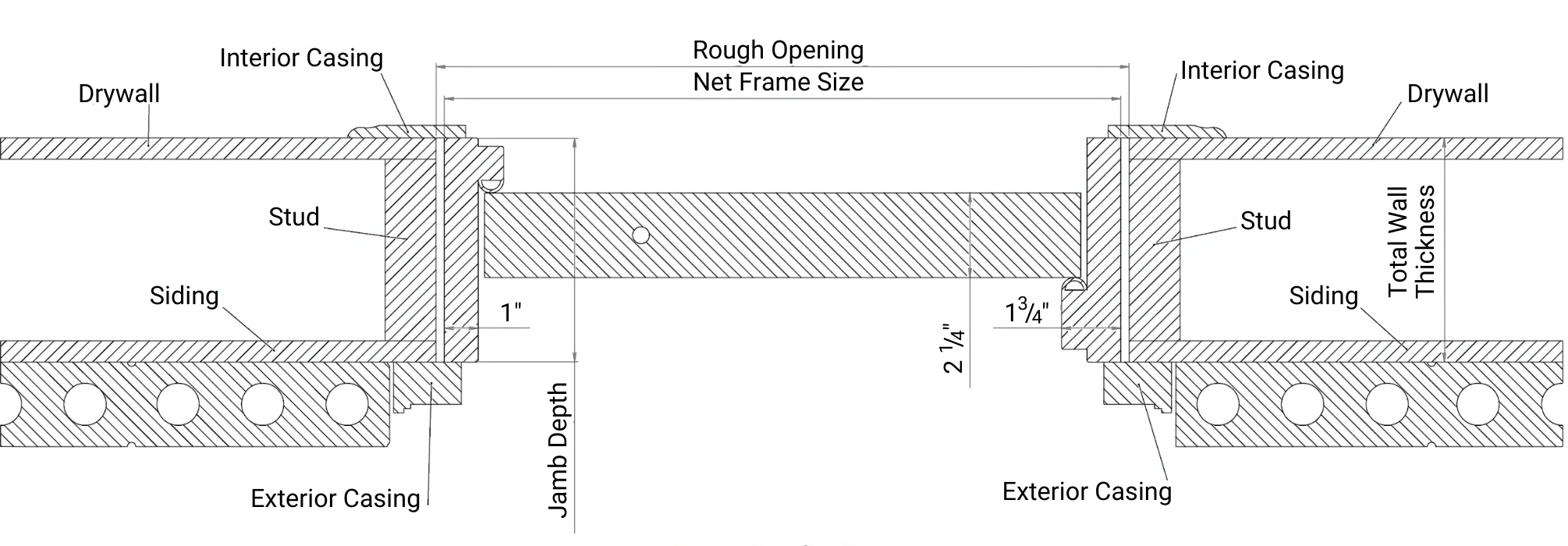 OutsideRough OpeningThe rough opening is the distance from stud to stud for framing purposes. We advise that you build a rough opening that is 1/2″ wider and 1/2″ taller than the total door unit. We find that this allows for sufficient shimming and adjustments during installation.NET FRAME SIZE: WIDTH AND HEIGHTThis is the size of the actual door jamb. When determining the net frame size you want to put in a number that is at least a half-inch less than the rough opening size to allow room to square and level the door. For example, for a rough opening 48″, order a net frame size of 47 1/2″.Collapse & Return
OutsideRough OpeningThe rough opening is the distance from stud to stud for framing purposes. We advise that you build a rough opening that is 1/2″ wider and 1/2″ taller than the total door unit. We find that this allows for sufficient shimming and adjustments during installation.NET FRAME SIZE: WIDTH AND HEIGHTThis is the size of the actual door jamb. When determining the net frame size you want to put in a number that is at least a half-inch less than the rough opening size to allow room to square and level the door. For example, for a rough opening 48″, order a net frame size of 47 1/2″.Collapse & Return - Wood Type
Wood TypeCHOOSING A WOOD SPECIESWe offer a range of wood species to go standard with our doors. If you would like something other than what we have, in most cases we can source other wood types that are not listed below, though prices will vary.
As you decide which wood you’ll choose please consider these important factors:- How the wood species will react to your climate and site condition
- How it collaborates with the overall design of the door and your project
If you have specific questions about what wood to choose that are not answered here, feel free to reach out to us.Our Standard SelectionImages are for reference only. All orders are shipped out unfinished and stain-ready. (No stain or clear-coat.) Mahogany (Sapele)
Mahogany (Sapele)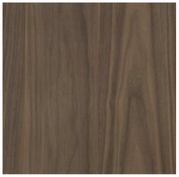 Walnut
Walnut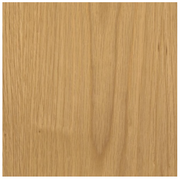 White Oak
White Oak Cedar
Cedar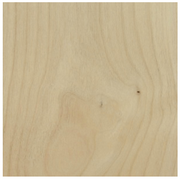 Premium Alder
Premium Alder Paint GradeMahogany (Sapele)African Mahogany (Sapele) is a reddish-brown hardwood wood and is desired for its rarity, strength, and beauty. It is one of our most durable and resists swelling and warping, making it ideal for harsher environments and coastal climates.White OakWhite Oak hardwood has a medium brown grain with an olive cast, while the sapwood ranges from a light cream to tan. Its moisture movement is medium to high and it has a good density with a medium to coarse texture. White Oak is more resistant to weathering issues than Red Oak.CedarCedar is a light, reddish-brown softwood. This wood is softer than most hardwoods. Cedar’s fine, straight grain and uniform texture provides a smooth surface ideal for staining, although it requires more maintenance than Mahogany. Cedar remains stable and resists warping, making it a reliable and attractive lighter option.WalnutAmerican Black Walnut hardwood is naturally darker in color, much like an espresso brown. It is strong, hard, and exceptionally durable, without being excessively heavy. When sealed there is a dark contrast from the heartwood and sapwood offering an exotic finish. Although Walnut is naturally dark it has the propensity to lighten over time.Premium AlderPremium Alder is a light brown with a yellow or reddish tinge. The wood is fairly straight grained with a uniform texture. Alder is a relatively soft hardwood of medium density that has low bending strength, shock resistance, and stiffness. Premium Alder captures the grain beauty without the rustic feel of open knot. (Will contain some closed knots.)Paint GradePaint-Grade is a wood that offers a flat surface and is free of knots and heavy grain patterns. Usually Mahogany (Sapele) but can be other woods, will be painted to hide any imperfections.Collapse & Return
Paint GradeMahogany (Sapele)African Mahogany (Sapele) is a reddish-brown hardwood wood and is desired for its rarity, strength, and beauty. It is one of our most durable and resists swelling and warping, making it ideal for harsher environments and coastal climates.White OakWhite Oak hardwood has a medium brown grain with an olive cast, while the sapwood ranges from a light cream to tan. Its moisture movement is medium to high and it has a good density with a medium to coarse texture. White Oak is more resistant to weathering issues than Red Oak.CedarCedar is a light, reddish-brown softwood. This wood is softer than most hardwoods. Cedar’s fine, straight grain and uniform texture provides a smooth surface ideal for staining, although it requires more maintenance than Mahogany. Cedar remains stable and resists warping, making it a reliable and attractive lighter option.WalnutAmerican Black Walnut hardwood is naturally darker in color, much like an espresso brown. It is strong, hard, and exceptionally durable, without being excessively heavy. When sealed there is a dark contrast from the heartwood and sapwood offering an exotic finish. Although Walnut is naturally dark it has the propensity to lighten over time.Premium AlderPremium Alder is a light brown with a yellow or reddish tinge. The wood is fairly straight grained with a uniform texture. Alder is a relatively soft hardwood of medium density that has low bending strength, shock resistance, and stiffness. Premium Alder captures the grain beauty without the rustic feel of open knot. (Will contain some closed knots.)Paint GradePaint-Grade is a wood that offers a flat surface and is free of knots and heavy grain patterns. Usually Mahogany (Sapele) but can be other woods, will be painted to hide any imperfections.Collapse & Return - Plank Height
Plank HeightThe Robyn is available with either 12″ tall planks or 6″ tall planks with a diagonal reveal between planks.
 6″ Tall Planks
6″ Tall Planks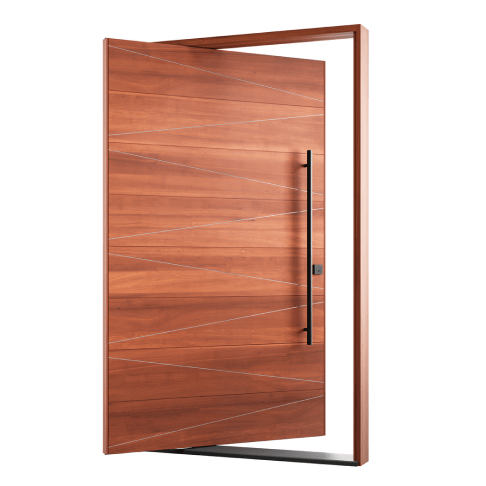 12″ Tall PlanksCollapse & Return
12″ Tall PlanksCollapse & Return - Jamb Depth
Jamb DepthJamb depth depends on the thickness of the walls into which the door unit will be placed. Most walls are studded out with 2×4s or 2×6s, and so, our most common jamb depths are 4 5/8″ and 6 5/8″, respectively. Usually the jamb is flush with the interior and exterior wall covering, with the seam covered by casing.We have standard jamb depths of:4 5/8″5 1/4″5 1/2″6 5/8″7 1/2″If you wish for us to provide a jamb depth different from one of our standard options, please contact us.Inside
 OutsideCollapse & Return
OutsideCollapse & Return - Swing Configuration
Swing ConfigurationYou have options when it comes to how your door will swing.The first decision is inswing or outswing. In most cases, you will want a door that swings into the interior (inswing), but we are set up to build jambs where the door swings out to the exterior (outswing; typically a commercial application, or when the project permits it).
When it comes to right-hand or left-hand swing, the layout of your installation site will determine the swing configuration. To determine if the door is a left-hand or right-hand swing configuration, imagine you are looking at the door from the street. If the pivot point is on the left-hand side, it is a left-hand swing. If the pivot point is on the right-hand side, the door is a right-hand swing. Left Hand InswingOpens to Interior
Left Hand InswingOpens to Interior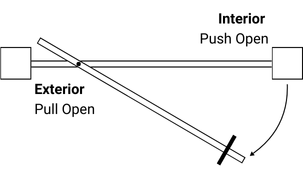 Left Hand OutswingOpens to Exterior
Left Hand OutswingOpens to Exterior Right Hand InswingOpens to Interior
Right Hand InswingOpens to Interior Right Hand OutswingOpens to ExteriorCollapse & Return
Right Hand OutswingOpens to ExteriorCollapse & Return - Pivot Placement
Pivot PlacementThe pivot placement is the distance the pivot pin will be placed away from the vertical edge of the rough opening. Generally speaking, we suggest placing the pivot over one quarter of the distance of the door width. We find that this presents a solid aesthetic for most door dimensions. If your rough opening is 48” and you choose a 9” pivot placement, the door will roughly have a 37” passthrough opening. You want to ensure you leave at least a 36” opening. (Rough opening width – pivot placement measurement – 4″ for jamb = a number greater than 36). See picture for details or contact us for clarification.Pivot Placement

 Suggested Pivot PlacementDoor Slab WidthPivot Placement
Suggested Pivot PlacementDoor Slab WidthPivot Placement42″ – 44″ 4″ 45″ – 47″ 6″ 48″ – 53″ 9″ 54″ – 60″ 12″ 61″ – 66″ 15″ 67″ – 70″ 18″ 71″ – 74″ 21″ 75″ – 80″ 24″ 81″ – 84″ 30″ Collapse & Return - Window Placement
Window PlacementIf you choose a door style with a window, you have the option to place the window on the handle side or on the pivot side.
 Window On Handle Side
Window On Handle Side Window On Pivot SideCollapse & Return
Window On Pivot SideCollapse & Return - Vertical Plank Placement
Vertical Plank PlacementIf you choose a door style with a steel plank, you have the option to place it on the handle side or on the pivot side.
 Vertical Plank On Handle Side
Vertical Plank On Handle Side Vertical Plank On Pivot SideCollapse & Return
Vertical Plank On Pivot SideCollapse & Return - Door Glass Color
Door Glass ColorStandard Glass OptionsAll glass we install is 1″ thick tempered double-paned, insulated glass. Clear and frosted glass patterns are standard pricing options.
 Frosted White Glass
Frosted White Glass Clear GlassCustom Glass OptionsIf you are looking for different finish or insulating options, contact us directly and we can provide pricing. You can vary the glass pattern (rain, reflective, glue chip, reeded etc.), glass construction (low e, laminated) or tint (grey, brown tints).
Clear GlassCustom Glass OptionsIf you are looking for different finish or insulating options, contact us directly and we can provide pricing. You can vary the glass pattern (rain, reflective, glue chip, reeded etc.), glass construction (low e, laminated) or tint (grey, brown tints).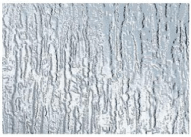 Rain
Rain Pattern 62
Pattern 62 Reed
Reed Glue Chip
Glue Chip Velve XCustom Glass Tint
Velve XCustom Glass Tint Greylite II
Greylite II BronzeCollapse & Return
BronzeCollapse & Return - Threshold Color & Type
Threshold Color & TypeThreshold ColorYou may choose between two different finishes for the aluminum threshold cover plate: Black or Grey.
 Black Threshold
Black Threshold
Dark Bronze Anodized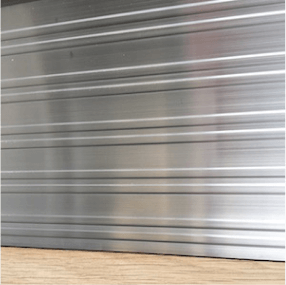 Grey Threshold
Grey Threshold
Mill Finished AluminumThreshold TypeIf there is any type of wood covering on the interior of the house, you will need a Type 2. The Type 2 threshold has a 90-degree angle on the interior facing side for the wood covering to butt up against. If the exterior floor is the same level as the interior floor, you will need a Type 1 threshold. More commonly, though, the exterior floor is lower than the interior floor and you will need a Type 2 threshold.Threshold Options Threshold Type 1
Threshold Type 1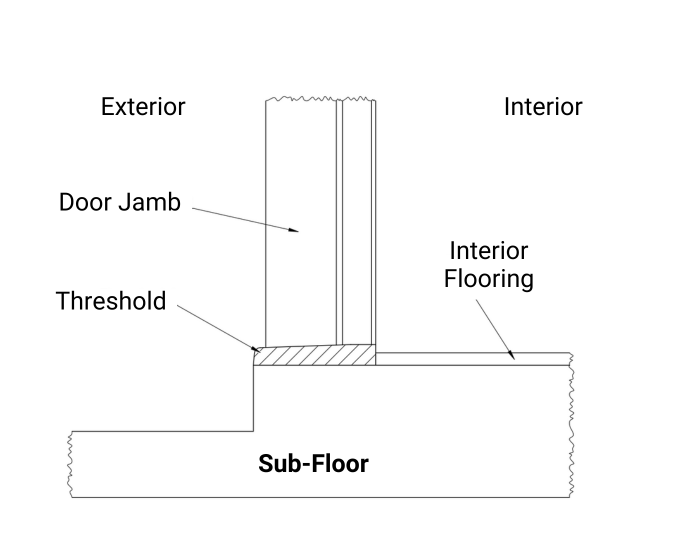 Threshold Type 2
Threshold Type 2 Threshold Type 2Collapse & Return
Threshold Type 2Collapse & Return - Pivot Hardware
Pivot HardwareFree-Swing Pivot HingeOur standard pivot hardware is a durable, specially engineered free-swing pivot hinge. This pivot hardware works for a wide range of doors, from small to very large. No matter the door size, the free-swing pivot hinge allows for effortless door operation. The hardware incorporates sets of ball-bearings for smooth, long-lasting performance. The door swings freely around the pivot point. There are no springs or tension pulling the door closed.Upgraded Closer: Dorma BTS/80In commercial applications and in rare residential applications, we install a bottom closer. The bottom closer creates constant tension on the door’s swing to pull the door into the closed position. This means one must hold the door in order to keep it open. With a closer the door will not rest in an open position unless the hold-open feature is activated, which holds the door open at a 100-degree angle.Collapse & Return
- Custom Handle
Custom HandleThe Custom Handle for the Kogan door is 3″ wide, 1 1/4″ deep. The length will be determined by your door size in order to fit within the top and bottom rail correctly. the Custom Handle will come unfinished, stain-ready (same as the door). Handle is sold as a set (one for interior and one for exterior). You have an option to choose a different wood type for the handle than for the door. Mahogany (Sapele) is shown in the product photo above.When purchased alongside the Kogan, Pivot Door Company will custom-make your handle to fit your door size, and prep your door appropriately. The handle will still need to be installed on site after the door is installed. This ensures we’re able to appropriately package the handle so it is not damaged during shipping and the door can lay flat for shipping.Collapse & Return
- Handle Finish
Handle FinishOur standard color for the integrated handle is BLK-120 (black). You may choose any color available. We can purchase colors from the link below. Please look through the options. Prismatic Powders allows you to buy samples if you’d like to see the colors in-person. We only need to know the color code.Collapse & Return
- Deadbolt & Handleset Prep
Deadbolt & Handleset PrepSingle BoreIf choosing a pull bar setup, you will select Single Bore. We will pre-drill and bore the door for a deadbolt with a 2 3/8″ or 2 3/4″ backset. Standard bore diameter is 2 1/8″ with a 1” cross-bore. The term “backset” refers to the distance from the edge of the door to the center of the bore hole and is a personal preference. We suggest the smaller of the two options, 2 3/8″, especially if the door has glass. See the diagram below for more details.Double BoreIf choosing a lever or thumb-latch setup, you will select Double Bore. We will pre-drill and bore the door for a 1) lever and 2) deadbolt with a 2 3/8″ or 2 3/4″ backset. Standard bore diameter is 2 1/8″ with a 1” cross-bore. The term “backset” refers to the distance from the edge of the door to the center of the bore hole and is a personal preference. See the diagram below for more details.MortiseWe can mortise the door for many entry lock sets. Please contact us directly to configure your specific requirements.OtherIf you wish for your door to be prepped for a handle you purchase from another vendor, you will need to provide us with the specifications for the handle or lockset so we can prep it properly. You may be required to send it to our shop for us to adequately prep your door. Alternatively, you may decide that you want to wait and have a local carpenter prep the door handle.Standard Handle Prep
 Single Bore
Single Bore Double BoreCollapse & Return
Double BoreCollapse & Return - Inlay Options
Inlay Options6″ Robyn Inlay Options
 No Inlays
No Inlays Inlay Two Then Skip Two
Inlay Two Then Skip Two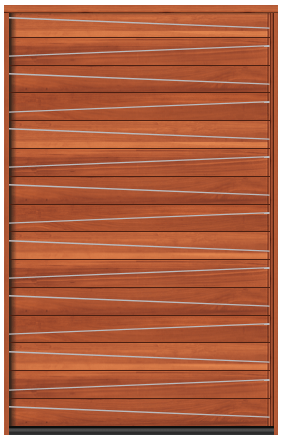 All12″ Robyn Inlay Options
All12″ Robyn Inlay Options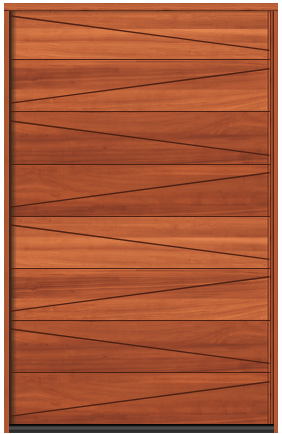 No Inlays
No Inlays Inlay Two Then Skip Two
Inlay Two Then Skip Two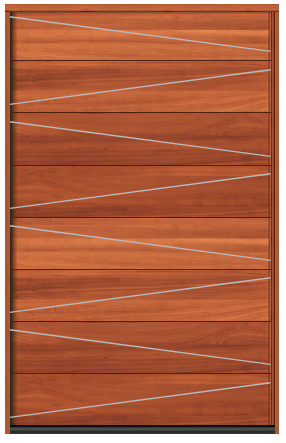 AllCollapse & Return
AllCollapse & Return - Sidelights
SidelightsGLASS SIDELIGHT PLACEMENT ON DOOR UNITYou can choose between the following sidelight configurations:
- Right Sidelight
- Left Sidelight
- Transom Light
- Double Sidelight
- Left Sidelight with Transom
- Right Sidelight with Transom
- Double Sidelight with Transom
Sidelight placement is specified with reference to the exterior view. If you want a 12″ sidelight that is on the right side when viewed from the exterior, click on the dropdown options under “Right Sidelight” and select the option: 12″ Right Sidelight. If you want a double sidelight, simply a size under both the the Right Sidelight and Left Sidelight options. Double sidelights can be different sizes.NET SIDELIGHT SIZEThis is the size of the actual sidelight jamb. When inputting the net frame size you want to put in a number that is at least a half-inch less than the rough opening size to allow room to square and level the unit.
Example: 48″ x 98″ door with a 18″ x 98″ sidelight will get you a door and sidelight combo that measures 66″ x 98″ (the rough opening size should be somewhere around 66 1/2″ x 98 1/2″). Collapse & Return
Collapse & Return - Sidelight Glass Color
Sidelight Glass ColorStandard Glass OptionsAll glass we install is 1″ thick tempered double-paned, insulated glass. Clear and frosted glass patterns are standard pricing options.
 Frosted White Glass
Frosted White Glass Clear GlassCustom Glass OptionsIf you are looking for different finish or insulating options, contact us directly and we can provide pricing. You can vary the glass pattern (rain, reflective, glue chip, reeded etc.), glass construction (low e, laminated) or tint (grey, brown tints).
Clear GlassCustom Glass OptionsIf you are looking for different finish or insulating options, contact us directly and we can provide pricing. You can vary the glass pattern (rain, reflective, glue chip, reeded etc.), glass construction (low e, laminated) or tint (grey, brown tints). Rain
Rain Pattern 62
Pattern 62 Reed
Reed Glue Chip
Glue Chip Velve XCustom Glass Tint
Velve XCustom Glass Tint Greylite II
Greylite II BronzeCollapse & Return
BronzeCollapse & Return - Double Door System
Double Door System
 Size Of DoorsWe will use the Frame Width and the Number of Doors to calculate the width of the individual doors in the wall system. For example, if the frame width is 120″, the individuals doors will be approximately 60″ wide. Please contact us directly if you wish to configure the double door system widths differently. For example, if the frame width is 120″, the individual doors can be 48″ and 72″ wide.Example Dimension Two Doors
Size Of DoorsWe will use the Frame Width and the Number of Doors to calculate the width of the individual doors in the wall system. For example, if the frame width is 120″, the individuals doors will be approximately 60″ wide. Please contact us directly if you wish to configure the double door system widths differently. For example, if the frame width is 120″, the individual doors can be 48″ and 72″ wide.Example Dimension Two Doors Collapse & Return
Collapse & Return -
Double Swing Configuration
Double Swing ConfigurationWhen you order your pivot-hung entryway, you have options when it comes to how the door will swing. Though 99% of the time, you will want a door that swings into the interior (inswing), we are set up to build jambs where the door swings out to the exterior (pushing your visitors out of the pathway of your tremendous door).However, when it comes to right-hand or left-hand swing, the layout of your installation site will determine the swing configuration. To determine if the door is left-hand or right-hand inswing, imagine you are looking at the door from the street. If the pivot point is on the left side, it is a left-hand inswing. If the pivot point is on the right-hand side, the door is a right-hand inswing.Diagram of Potential Configurations – Swing configuration defines the direction of the door motion and from which side the pivot is placed.
 Double Swing InOpens to Interior
Double Swing InOpens to Interior
 Center Swing OutOpens to Exterior
Center Swing OutOpens to Exterior Double Swing OutOpens to Exterior
Double Swing OutOpens to Exterior
 Center Swing InOpens to InteriorCollapse & Return
Center Swing InOpens to InteriorCollapse & Return - Shipping
ShippingStandard 6 Week Lead TimesYour door leaves the shop six weeks from order confirmation. Allow additional time* for freight delivery. See map below for approximate transit times to your region.
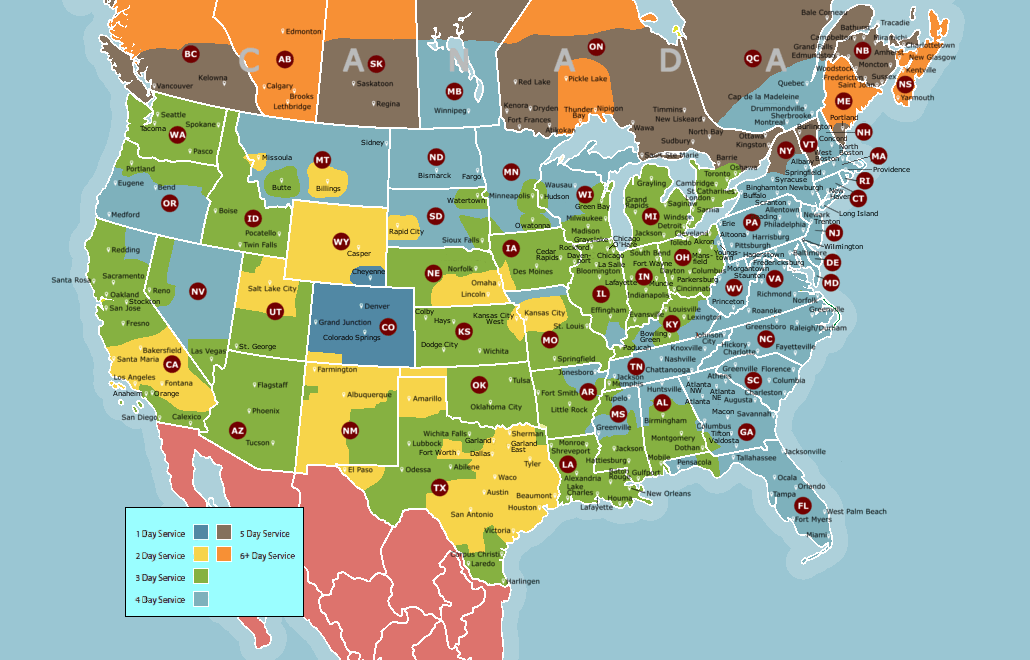 Rush ShippingIf six weeks is not soon enough, we can manufacture a custom door sooner if you choose the Rush Option. The additional charge covers reducing current production time by 2 weeks including but not limited to: paying the extra hours worked by the production team, paying rush charges for any specialty hardware/materials not in stock. While most door designs are able to be completed in this time frame, some custom or specialty designs may require additional time in production. Allow additional time* for freight delivery.
Rush ShippingIf six weeks is not soon enough, we can manufacture a custom door sooner if you choose the Rush Option. The additional charge covers reducing current production time by 2 weeks including but not limited to: paying the extra hours worked by the production team, paying rush charges for any specialty hardware/materials not in stock. While most door designs are able to be completed in this time frame, some custom or specialty designs may require additional time in production. Allow additional time* for freight delivery.
*Pivot Door Company guarantees ship dates; we do not guarantee delivery times. Ship times depend on the carrier. That being said, we have come to trust and see great reliability in Fedex Freight.Collapse & Return


